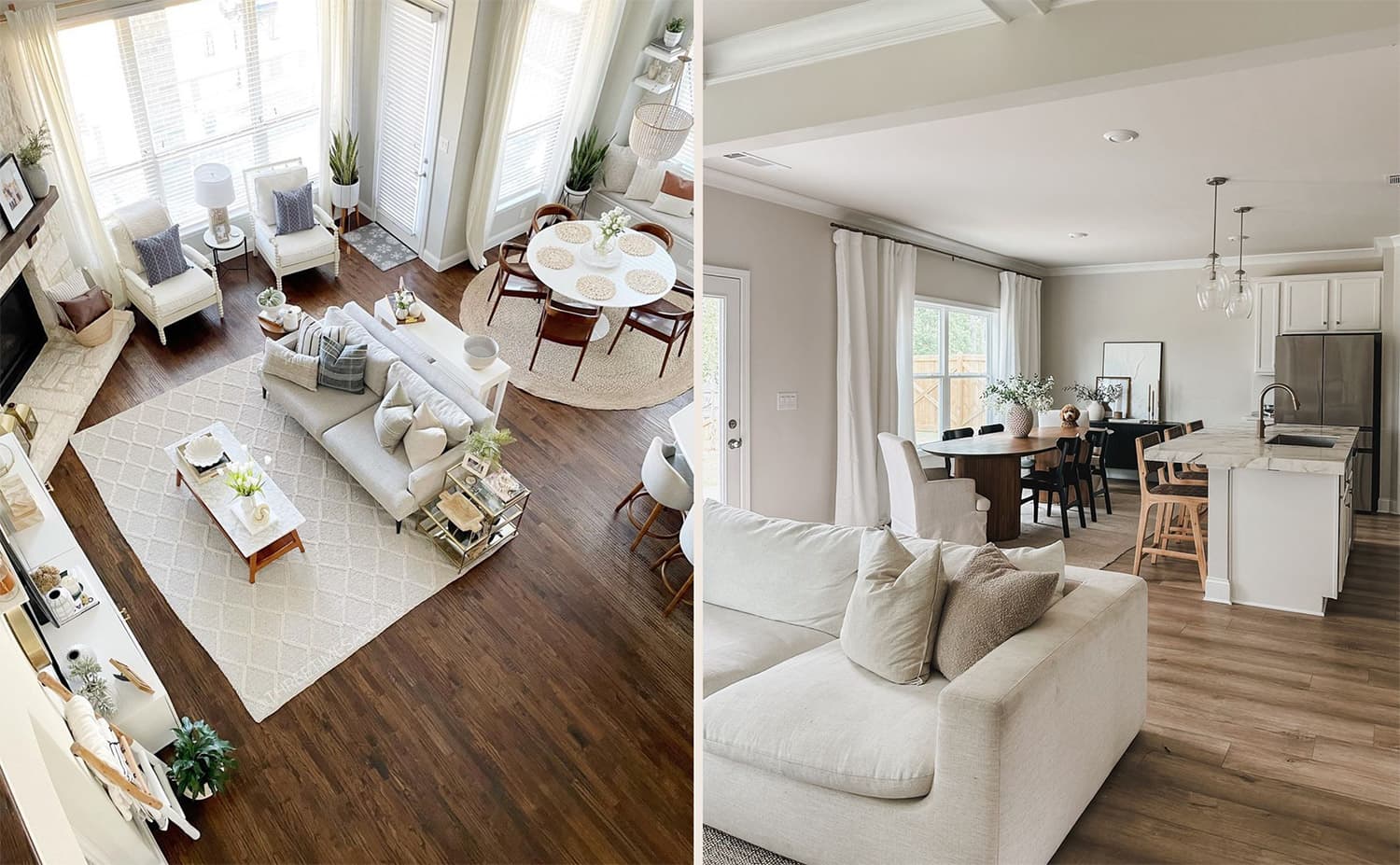Harmony isn’t just something you can associate with music. Harmony in interior design is when your furnishings fit together and create a visual calmness. Achieving harmony isn’t necessarily about a minimalist approach, but about crafting an inviting space. You want your space to inspire and intuitively guide you from room to room, making everything cohesive. Here’s how you can optimize the flow of your home for a layout that works with you, not against you.
Define Your Spaces

Photo from: @christielewisinteriors
Let’s kick things off by zoning your home like a pro. Having a great flow is like putting a puzzle together; each piece must fit together and be aligned with your desired functionality. Start by clearly defining your space: living areas are your social hub, kitchens are the command center, work nooks should be energizing and boost productivity, and chill zones like your bedroom should feel serene. By giving each area a purpose, you’ll avoid the dreaded “What is this room even for?” dilemma. The sooner you define a space, the better it is to create flow. It’s simple, but not everyone follows this, which creates discord and chaos in the energy your space has.
Open Concept Living

Photo from: @christielewisinteriors Photos from: @threetimesahome; @hope.decarlo
Optimizing flow means arranging your space so movement is intuitive and effortless. An open-concept living area isn’t just a trend; it’s a way to bring your family together, minus the walls. Imagine cooking up a storm while still being part of the conversation in the living room. It’s about creating a space that’s as multifunctional as a Swiss Army knife. When defining your spaces, use rugs, lighting, and furniture placement to subtly define areas without needing walls. Remember to give each activity its own space without losing the openness that brings us together.
Keep Your Senses Connected

Photo from: @christielewisinteriors Photo from: @tarakantorinteriors
Engage your senses by thinking about lighting, textures, and sounds. Natural light and great air ventilation should be your best friend, so let it flood in wherever possible. There’s a reason why we have different types of lighting depending on its functionality, so go back to the way you define each space and match it with the proper lighting. Regarding texture, soft fabrics, and strategically placed rugs can make a space feel cozy and inviting. And for the love of all things comfy, let’s keep those acoustics in check. No one wants to hear every single footstep echoing through the halls. Think about layering textures with throw blankets, plush cushions, and even a mix of materials like wood, metal, and glass for a dynamic yet cohesive look.
The Path Less Obstructed

Photo from: @christielewisinteriors Photo from: @deeplysouthernhome
Your home’s layout should guide you effortlessly from room to room, like a gentle stream, not a maze. Think about the paths you take daily and make them as direct and clutter-free as possible. A clutter-free space looks better and makes moving around a breeze. You can use rugs or flooring patterns to define clear pathways. This guides movement and adds a visual element to your space. You should also ensure that sightlines are clear from one room to another. This means avoiding tall furniture or decor that blocks the view. A clear line of sight makes a space feel more open and connected.
Furniture Placement: The MVP

Photo from: @christielewisinteriors Photo from: @lifestylebystadler
Furniture isn’t only there to fill space; it serves a purpose. Think strategically about where you place your pieces. A well-placed sofa can create a conversation nook, while a misplaced coffee table can become a toe-stubbing hazard. Use your furniture to guide movement and enhance the functionality of each room. In larger rooms, anchor your furniture with a large rug to define the space. Ensure all major pieces, like sofas and chairs, touch the rug’s edges to create a cohesive look. This helps to visually separate different areas within an open-concept layout, making each zone feel distinct and purposeful. And remember that you don’t always have to push furniture against the walls. Floating furniture in the middle of the room can create a more intimate setting and make the space feel larger.
Ready to Go with the Flow?
Optimizing the flow of your home isn’t just about following design trends; it’s about creating a space that reflects how you live, breathe, and move. It’s about making your home work for you, not the other way around. Ready to transform your space into a flow-optimized haven? Let’s make your home’s layout work smarter, not harder.
So, if you’re tired of bumping into furniture and feeling like your home is more of an obstacle course, let’s chat and start your interior design journey toward a functional home that exudes visual calmness.
